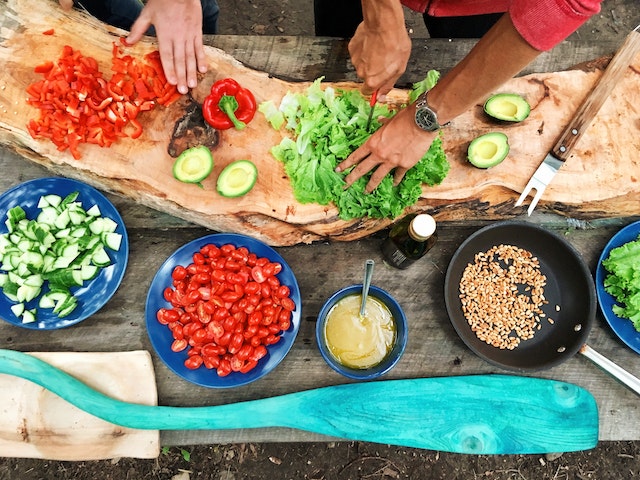Homeowners now have access to a wider variety of cutting-edge options as a result of the development of new architectural styles and the growing preference for living spaces that include outdoor elements. Prefabricated outdoor kitchens are one such option that has seen a meteoric rise in popularity over the last few years. These pre-assembled structures are a challenge to the conventional designs of outdoor kitchens since they provide an effortless combination of convenience and elegance.
Understanding the Prefab Concept
It can be more difficult to obtain the same degree of uniformity and quality control when working with custom-made designs than it is when using prefabricated outdoor kitchens. These kitchens are created with standardization in mind and are meant to last. They accommodate a wide range of spending limits and aesthetic preferences, providing a variety of design options while simultaneously lowering the possibility of construction-related surprises.
This modular solution is especially beneficial for homeowners who want a simplified construction procedure that causes as little interruption as possible to their outside settings since it can provide both of those things. In addition, if relocating is essential, some prefab models are made to be portable, which makes the process of transitioning much simpler. Prefabricated kitchens, in general, combine the appeal of eating al fresco with the practicality of contemporary architectural design and production techniques.
Time-Efficiency and Hassle-Free Installation
One of the primary advantages of prefab outdoor kitchens is the speed of installation. Since a significant portion of the structure is pre-assembled, homeowners don’t have to endure lengthy construction processes. This method not only saves time but also reduces labor costs associated with traditional buildings. Professionals can typically install the kitchen within a day, ensuring minimal disruption to daily life. Additionally, the pre-fabrication process ensures a standardized quality, minimizing the potential for onsite construction errors or inconsistencies.
Versatility in Design and Aesthetics
It is a frequent assumption that opting for prefabrication means giving up design flexibility, but this is not the case. Prefabricated modern outdoor kitchens are available in a wide variety of designs, materials, and finishes. A prefab solution may exist that corresponds to one’s vision, regardless of whether they are going for a rustic traditional design or a sleek modern look. In addition, several manufacturers provide customization choices, which enable homeowners to personalize certain aspects to their tastes and preferences. Because of this combination of ease of use and personalization, prefab kitchens are a flexible option that may cater to a variety of aesthetic preferences.
Cost-Effective without Compromising Quality
Prefabricated outdoor kitchens often come with a pricing structure that is easier to anticipate. Because they are manufactured in bulk quantities to predetermined standards, there are fewer unforeseen costs associated with the materials or labor required for the installation procedure. Furthermore, the fact that it is created in regulated circumstances guarantees that the quality is constant, which results in an outdoor kitchen that is both long-lasting and well-built. Because of this price clarity, homeowners can create more accurate budgets, which in turn reduces the likelihood of incurring unexpected charges. As a consequence of this, prefab choices provide not just monetary clarity but also the guarantee of a high-quality end product.
Adaptability to Spaces
Prefab kitchens offer a degree of modularity, making them adaptable to various outdoor spaces. Whether it’s a compact urban balcony or an expansive backyard, there are prefab designs tailored to fit different spatial constraints. This adaptability ensures that homeowners can find a solution that maximizes both functionality and aesthetics, irrespective of space size. Additionally, the modular nature allows for potential expansions or reconfigurations in the future. Thus, as homeowners’ needs change, the kitchen can evolve without necessitating a complete overhaul.
Integrating Appliances and Amenities
Modern prefab outdoor kitchens are designed to accommodate a range of appliances. From grills, stovetops, and ovens to refrigerators and sinks, these kitchens can be as equipped as their indoor counterparts. Moreover, utilities like plumbing and electricity are seamlessly integrated, ensuring that the outdoor culinary experience is both smooth and enjoyable. This blend of functionality and design ensures that hosts can entertain guests with ease, creating memorable alfresco dining experiences. As a result, the boundaries between indoor and outdoor living spaces become increasingly blurred, elevating the overall ambiance of the home.
Sustainability and Eco-Friendly Options
With the increasing emphasis on sustainability, many manufacturers of prefab outdoor kitchens are adopting eco-friendly practices. This includes the use of sustainably sourced materials, energy-efficient appliances, and designs that minimize waste. For homeowners conscious of their environmental footprint, these sustainable prefab options provide an avenue to enjoy outdoor cooking without compromising on green values. Additionally, the reduced construction time and waste associated with prefab installations further bolster their eco-friendly credentials. As a result, choosing a sustainable prefab outdoor kitchen aligns both with modern design preferences and a commitment to environmental responsibility.
Conclusion
Outdoor kitchens that are prefabricated are built and put together in controlled circumstances, which ensures that each item is of the highest possible quality and consistency. This simplified technique not only cuts down on the amount of time needed for installation but also lessens the likelihood of mistakes being made during the actual building process. Homeowners have the option of choosing from a wide range of designs and layouts, which can accommodate a variety of spaces, from little patios to large backyards.




